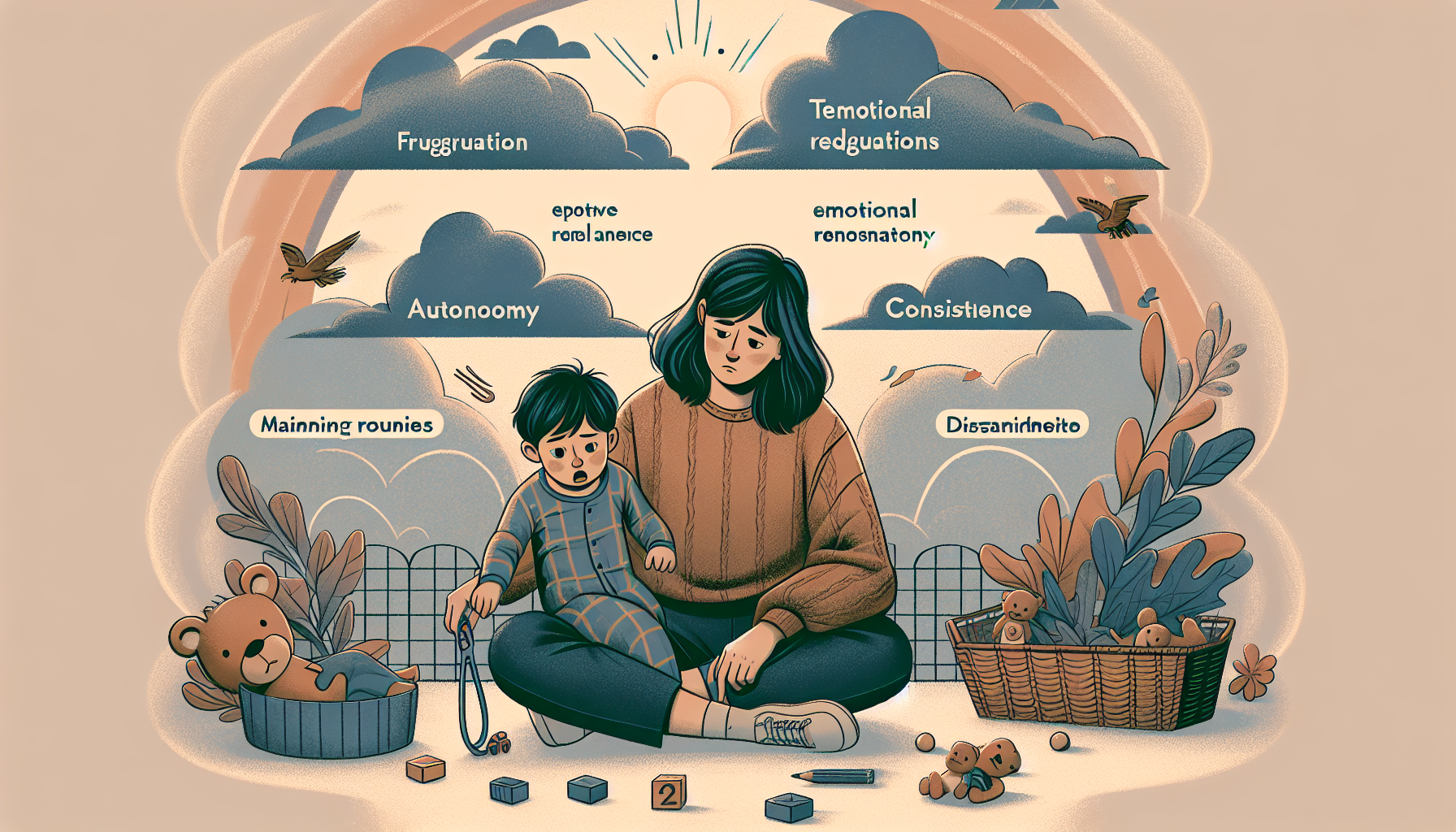“`html
How to Handle Toddler Tantrums: A Parent’s Guide
Introduction
If you’re a parent or caregiver of a toddler, you’ve likely faced the whirlwind of emotions that is a toddler tantrum. These outbursts can be overwhelming, exhausting, and sometimes even embarrassing, but they are also a normal part of child development. Understanding how to handle toddler tantrums effectively can help create a more peaceful home environment and strengthen the bond between you and your child.
In this article, we’ll discuss the reasons behind tantrums, explore strategies for managing emotions, and provide practical tips for behavior correction that every parent can use. By understanding your child’s needs and responding to tantrums with empathy and consistency, you can make these challenging moments more manageable.
Why Do Toddlers Have Tantrums?
Toddler tantrums are a natural part of growing up. At this age, children are learning to navigate big emotions but often lack the language and coping skills to express themselves. Here are some common reasons behind tantrums:
- Frustration: Toddlers may feel frustrated when they can’t do something on their own or when their desires are unmet.
- Hunger or Fatigue: Physical discomfort, like being tired or hungry, often triggers a meltdown.
- Need for Autonomy: Toddlers crave independence and may resist when they feel controlled or restricted.
- Overstimulation: Crowded or noisy environments can overwhelm young children, leading to tantrums.
- Difficulty Managing Emotions: At this stage, toddlers are still developing emotional regulation skills, making it harder for them to handle intense feelings.
How to Respond to Toddler Tantrums
When a tantrum strikes, it can be tempting to react out of frustration or embarrassment. However, a calm and thoughtful response is much more effective. Here are some strategies to keep in mind:
1. Stay Calm
Your toddler takes cues from your behavior. If you stay calm and composed, it helps de-escalate the situation. Take a deep breath before responding and remind yourself that tantrums are a normal part of development.
2. Acknowledge Their Emotions
Validate your child’s feelings by acknowledging what they are experiencing. For example, you might say, “I see you’re upset because you wanted to play longer.” This shows your child that their emotions are understood and respected, which can help them feel more secure.
3. Offer Choices
Toddlers often feel powerless, which can fuel tantrums. Offering simple choices, like “Do you want to wear the red shirt or the blue shirt?” gives them a sense of control and can help prevent power struggles.
4. Set Clear Boundaries
While it’s important to validate feelings, it’s equally important to set clear boundaries. For instance, if your child is throwing a tantrum because they want candy before dinner, calmly explain that candy is not allowed right now, but they can have it after their meal.
5. Use Distraction
Young children have short attention spans, so redirecting their focus can work wonders. For example, if your child is upset about leaving the park, you could say, “Let’s go home and read your favorite book!”
6. Teach Emotional Regulation
Help your child learn to manage their emotions by modeling calming techniques, like taking deep breaths. You can also label emotions for them—”You’re feeling angry because you can’t have that toy”—to help them develop emotional awareness.
7. Avoid Giving In
While it may be tempting to give your toddler what they want to stop the tantrum, this can reinforce the behavior. Instead, stay firm and consistent with your boundaries.
Practical Recommendations for Managing Toddler Tantrums
In addition to the strategies above, here are some actionable tips that can make navigating tantrums a bit easier:
- Keep a Routine: Consistent routines provide a sense of security for toddlers. Try to maintain regular meal times, nap times, and play times.
- Prepare for Transitions: Let your child know ahead of time when a transition is coming. For example, you might say, “In five minutes, we’re going to leave the playground.”
- Encourage Positive Behavior: Praise your child when they handle a frustrating situation well. Positive reinforcement can motivate them to repeat good behavior.
- Limit Triggers: If you know certain situations often lead to tantrums, try to avoid or minimize those triggers. For instance, bring snacks if your child gets cranky when hungry.
- Practice Self-Care: Caring for a toddler can be exhausting, so make sure to take time for yourself. A well-rested and emotionally healthy parent is better equipped to handle tantrums.
Conclusion
Handling toddler tantrums is no easy feat, but understanding the reasons behind these outbursts and responding with empathy and consistency can make a significant difference. Remember, tantrums are a normal part of development and an opportunity to teach your child valuable skills like emotional regulation and problem-solving.
By staying calm, setting clear boundaries, and using strategies like offering choices and distractions, you can help your toddler navigate their big emotions more effectively. With patience and practice, you’ll not only reduce the frequency and intensity of tantrums but also build a stronger, more trusting relationship with your child.
For more parenting tips and insights, check out our resources on managing emotions, behavior correction, and more.
“`

